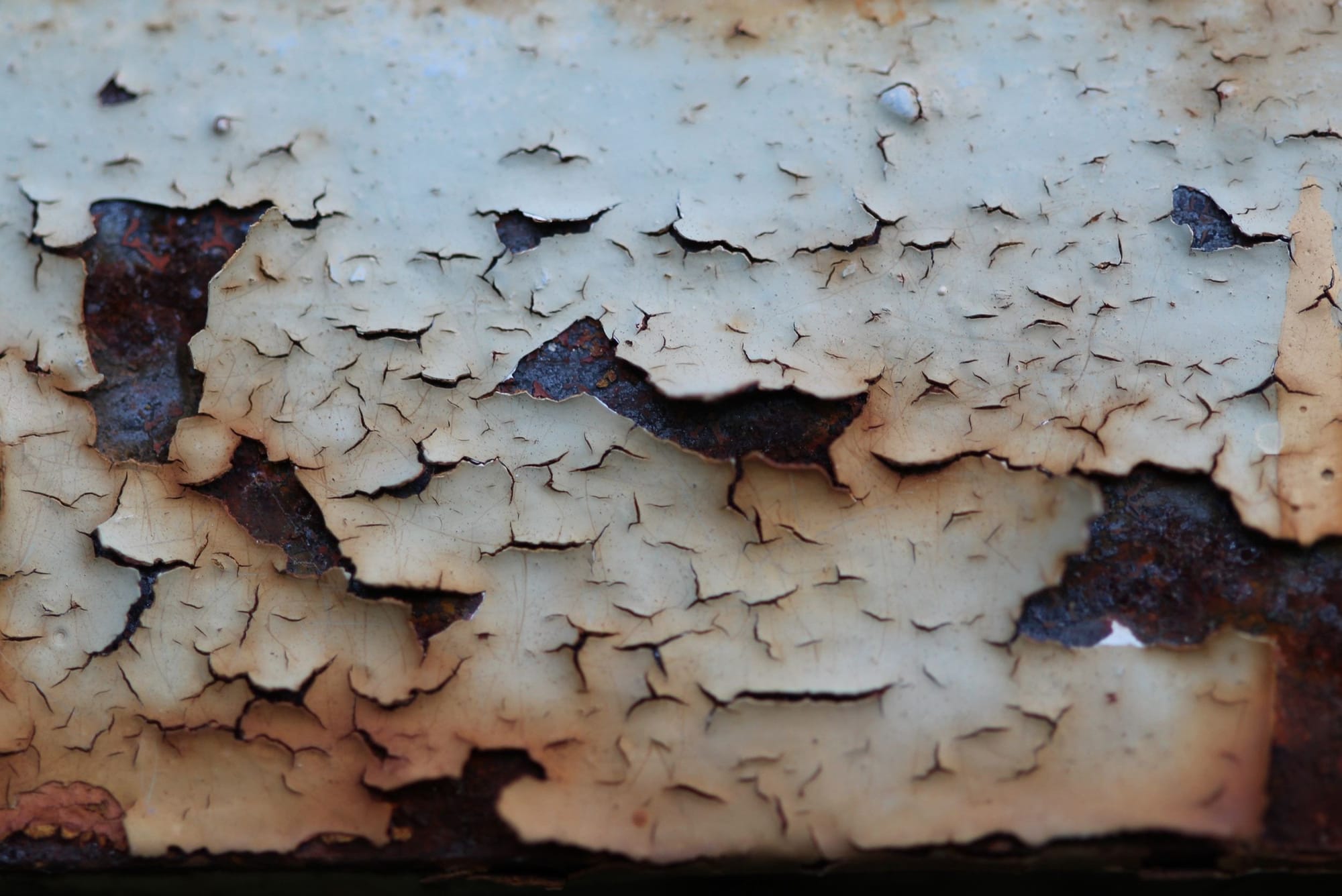5 Secrets to Stop Your Exterior Paint from Cracking for Good!

Key Features
- Proper Surface Preparation: Ensuring the exterior surface is clean, primed, and repaired is essential for preventing cracks and improving paint adhesion.
- Using the Right Paint: High-quality exterior paint with elastomeric properties can withstand environmental stressors and reduce the risk of cracking.
- Regular Maintenance: Conducting regular inspections and touch-ups, sealing openings, and protecting the walls from moisture can extend the life of your paint job.
The Impact of Cracked Paint on Curb Appeal and Maintenance
Cracked paint on exterior walls is more than just an eyesore. While it may start as a minor aesthetic issue, it often indicates deeper, more serious problems lurking beneath the surface. Cracked paint can allow moisture to seep into the walls, leading to water damage, mold growth, and even structural deterioration if left untreated. For homeowners looking to maintain their property’s value and curb appeal, preventing paint from cracking on exterior walls is crucial.
Once the cracks start, they can quickly worsen, creating pathways for rainwater to penetrate and eventually cause rot in wood, damage to drywall, or corrosion on metal surfaces. Over time, these issues can lead to costly repairs, making it essential to address cracked paint as soon as it appears.
Understanding Why Paint Cracks on Exterior Walls
Environmental Factors
One of the most common causes of cracked paint is exposure to the elements. Exterior walls are constantly subjected to harsh weather conditions—intense sunlight, heavy rain, freezing temperatures, and strong winds can all wear down even the most durable paint. In areas with significant temperature fluctuations, such as regions with hot summers and cold winters, the expansion and contraction of surfaces due to temperature changes can cause the paint to crack over time.
Sunlight and UV rays can break down paint pigments, causing fading and weakening the paint film. Similarly, moisture from rain, humidity, or snow can seep into the paint layers, weakening the adhesion between the paint and the surface underneath. In colder climates, the freeze-thaw cycle can be particularly damaging, as water that gets trapped in cracks can freeze, expand, and force the paint to peel away.
Poor Surface Preparation
Another major reason for cracked paint is poor surface preparation. Before painting, it’s essential to properly clean, sand, and prime the surface. Failing to do so can lead to poor adhesion, which means the paint won’t stick properly to the surface, making it prone to cracking and peeling prematurely.
Dirt, grime, mildew, and old, flaky paint should all be thoroughly removed before starting a new paint job. Skipping these steps is like laying a weak foundation—the paint will eventually lose its grip on the surface, resulting in unsightly cracks. In fact, one of the most effective steps in preventing paint from cracking on exterior walls is ensuring the surface is clean and well-prepared before applying any new paint.
Using the Wrong Type of Paint
Choosing the right type of paint is critical when painting exterior surfaces. Many homeowners make the mistake of using interior paint or low-quality exterior paint for their outdoor projects, thinking it will save money upfront. However, these paints aren’t formulated to withstand the extreme conditions that exterior walls face, making them more susceptible to cracking.
Interior paint lacks the durability and weather resistance needed for outdoor surfaces, while low-quality exterior paints may not have the necessary elasticity or protective properties. When selecting a paint for your exterior walls, it’s essential to choose one that’s specifically designed for the material of your home—whether it’s wood, brick, or stucco—and has the durability to handle the climate in your region.
Things to Know
- Extreme weather conditions, poor preparation, and using the wrong paint are common causes of cracked exterior paint.
- Proper surface cleaning, repairing damage, and using a primer are essential steps for preventing cracks.
- Elastomeric paint can help prevent cracking by expanding and contracting with the surface.
- Regular inspections, touch-ups, and moisture control are key to maintaining the integrity of exterior paint.
Best Practices for Preventing Paint from Cracking on Exterior Walls
Start with a Clean Surface
One of the most critical steps in preventing paint from cracking on exterior walls is ensuring that the surface is properly cleaned before you begin painting. Over time, dirt, mildew, mold, and old, flaking paint can accumulate on exterior walls, making it difficult for new paint to adhere properly. This leads to cracking and peeling shortly after application.
To avoid this, start by thoroughly cleaning the walls. Using a power washer is often the most effective method, as it can remove years of buildup quickly. For areas that are more sensitive or not suitable for power washing, use a scrub brush with mild detergent to clean the surface. Rinse thoroughly with clean water and allow the walls to dry completely before moving on to the next steps.
Repair and Prime the Surface
Once the surface is clean, it's crucial to repair any cracks, holes, or imperfections. Even small cracks or dents can lead to significant problems later, as they provide weak points where paint is more likely to crack or peel. Use a high-quality filler or caulk to repair any damage, and sand the area smooth once it's dry.
After repairs, applying a primer is essential. Priming the surface creates a strong bond between the paint and the wall, improving adhesion and durability. Primers are particularly important when painting over previously unpainted surfaces, such as new drywall or bare wood, or when transitioning from a darker color to a lighter one. Using a high-quality primer is one of the most effective ways to ensure that the paint doesn’t crack over time.
Choose the Right Paint
The type of paint you choose can make or break the longevity of your exterior paint job. High-quality, exterior-grade paint is formulated to withstand the environmental stressors that can cause paint to crack, such as UV rays, moisture, and temperature fluctuations.
For areas prone to extreme weather changes, elastomeric paints are a fantastic option. These paints have the ability to expand and contract with the surface, making them less likely to crack when exposed to heat or cold. Elastomeric paints are particularly useful for homes in climates with significant seasonal changes. By investing in high-quality paint with these properties, you're effectively preventing paint from cracking on exterior walls and ensuring a long-lasting finish.
Apply Paint Properly
Proper application techniques are just as important as the paint itself. Begin by choosing the right weather conditions for painting—ideally mild temperatures and low humidity. Painting in direct sunlight or when temperatures are too high can cause the paint to dry too quickly, leading to cracks. Similarly, painting in cold or wet conditions can prevent the paint from adhering properly.
When applying the paint, it’s better to use multiple thin coats rather than one thick coat. Thicker layers of paint are more likely to crack as they dry. By applying thinner coats, you allow the paint to dry evenly, which helps create a smooth, durable finish. Each coat should be allowed to dry thoroughly before applying the next to ensure proper adhesion and longevity.
Maintenance Tips to Keep Exterior Paint Looking Fresh
Regular Inspections and Touch-Ups
Even the best paint job requires some ongoing maintenance to keep it looking fresh and to prevent cracking. Conduct regular inspections of your exterior walls, especially after extreme weather events like heavy rain or strong winds. Check for any early signs of cracking, peeling, or bubbling.
Addressing small issues early can save you from larger repairs down the line. Quick touch-ups, like sealing small cracks with a bit of paint or primer, can prevent moisture from seeping into the wall and causing more significant damage. Regular inspections are a key part of preventing paint from cracking on exterior walls in the long term.
Protecting Against Moisture
Moisture is one of the leading causes of paint failure, especially on exterior walls. Proper sealing and caulking around windows, doors, and other openings can prevent moisture from getting behind the paint. Ensure that these areas are tightly sealed and regularly inspected for any gaps that could allow water in.
Another essential component of protecting against moisture is proper drainage. Gutters and downspouts should be kept clean and free of debris so that water flows away from the walls. This prevents excess moisture from accumulating around the base of the home, which can lead to paint cracking and even structural damage.
Repainting When Necessary
Finally, repainting your exterior walls every 5 to 10 years is crucial for maintaining a protective barrier. Even high-quality paint will begin to deteriorate over time due to exposure to the elements, and a fresh coat can help maintain both the appearance and the durability of your exterior walls.
Repainting not only enhances curb appeal but also helps in preventing paint from cracking on exterior walls by renewing the protective layer. Depending on the climate and the condition of the current paint, it may be necessary to repaint more frequently, but regular touch-ups and inspections can extend the lifespan of your exterior paint job.
In Our Experience
In our experience, preventing paint from cracking on exterior walls comes down to proper surface preparation, choosing the right paint, and regular maintenance. Cracks often appear when shortcuts are taken during these critical steps, but by staying vigilant and using high-quality materials, you can extend the life of your exterior paint job and avoid costly repairs.
Troubleshooting Common Painting Issues
What to Do If Your Paint Starts to Crack
Cracked paint is a common issue for many homeowners, especially when it comes to exterior surfaces exposed to the elements. When your paint starts to crack, it’s important to address the issue as soon as possible to prevent further damage. Here’s a step-by-step guide to preventing paint from cracking on exterior walls and fixing the problem.
- Scrape Away Loose Paint: The first step is to scrape away any loose or peeling paint using a putty knife or paint scraper. Be sure to remove all damaged areas so that the new paint can properly adhere to the surface.
- Sand the Surface: After scraping, sand the affected areas to smooth out the surface and remove any rough edges. Use medium-grit sandpaper to blend the edges of the remaining paint with the bare surface, ensuring that the transition between the old paint and the new coat will be seamless.
- Prime the Area: Priming is an essential step in ensuring proper adhesion and preventing paint from cracking on exterior walls in the future. Apply a high-quality exterior primer to the sanded areas to create a strong bond between the wall and the new paint.
- Repaint the Surface: Once the primer is dry, apply the new coat of paint. For the best results, apply multiple thin coats rather than one thick coat. This allows for even coverage and ensures that the paint has enough flexibility to expand and contract with the surface without cracking. Be sure to follow the manufacturer’s recommendations for drying times between coats.
- Consult a Professional: If the cracks are widespread or particularly deep, or if you notice ongoing moisture problems, it may be necessary to consult a professional painter or contractor. Large cracks or persistent issues could indicate underlying structural or moisture problems that need to be addressed before repainting.
Preventing Future Cracks
Once you’ve repaired the cracked paint, taking steps to prevent paint from cracking on exterior walls in the future is key to ensuring long-lasting results. Here are some essential tips to help prevent future cracks:
- Use High-Quality Paint: Investing in high-quality exterior paint, especially those with elastomeric properties, can significantly reduce the likelihood of cracking. These paints are designed to expand and contract with temperature changes, making them ideal for areas with fluctuating weather conditions.
- Follow Proper Application Techniques: As mentioned earlier, applying multiple thin coats of paint rather than one thick coat will allow for better adhesion and durability. Additionally, ensure you’re painting in ideal weather conditions—mild temperatures and low humidity—for the best results.
- Maintain Your Exterior Walls: Regular maintenance is key to preventing paint from cracking on exterior walls. Inspect your exterior surfaces for signs of wear and tear, especially after extreme weather events. Addressing small cracks or areas of concern early on can prevent the need for larger repairs down the line.
Staying proactive with regular maintenance and following these best practices will help keep your exterior paint looking fresh and intact for years to come.
Keep Your Exterior Walls Looking Their Best
Cracked paint on exterior walls isn’t just a cosmetic issue—it’s a sign that your home may need attention to prevent more significant problems. By taking preventive measures like proper surface preparation, using high-quality paint, and applying paint correctly, you can avoid many of the common issues that lead to cracking. Regular maintenance, including inspections and touch-ups, will help extend the life of your paint job and protect your home from the elements.
I encourage you to follow the best practices and tips outlined in this guide to prevent paint from cracking on exterior walls. If you have any questions or personal experiences, feel free to share them in the comments below to foster a community discussion on keeping exterior paint in top condition!
Do You Have Questions? Give Us A Call With Any & All! 503-389-5758
-
People Also Ask:
What causes exterior paint to crack?
Exterior paint can crack due to environmental factors like extreme weather, improper surface preparation, or using the wrong type of paint for the surface.
How can I prevent paint from cracking on my exterior walls?
Proper surface preparation, choosing high-quality exterior paint, and applying multiple thin coats under the right conditions are key to preventing paint from cracking.
What should I do if my exterior paint starts to crack?
Address cracks by scraping off the damaged paint, sanding the surface, applying a primer, and repainting with high-quality, exterior-grade paint.
-
SUBSCRIBE TO OUR BLOG: Stay informed with the latest in Painting and DIY projects by subscribing to Lightmen Painting. Get insights, tips, and more delivered straight to your inbox. We would also love to know what you would like to read about, leave thoughts on where we should go next. Interests, Topics, Ideas, all are welcome.
If your in the Portland, Or. area and need advice or a free no obligation estimate call us at 503-389-5758 or email scheduling@lightmenpainting.com
Thanks for stopping by Lightmen Daily! Stay tuned for more practical tips and expert advice on making your painting projects flawless, from wall to floor!
Definitions
- Cracked Paint: The result of paint breaking due to stress from environmental factors, poor surface preparation, or using the wrong paint type, which can lead to peeling or flaking.
- Elastomeric Paint: A type of flexible paint designed to expand and contract with the surface, preventing cracking in response to temperature changes or surface movement.
- Surface Preparation: The process of cleaning, sanding, and priming a surface to ensure proper adhesion and longevity of the paint.
- Moisture Damage: The result of water seeping into cracks, which can lead to peeling paint, mold, and structural issues.
- Caulking: The application of sealant around windows, doors, and other openings to prevent water from entering and causing paint to crack.
- Primer: A preparatory coating applied before paint to improve adhesion and create a smooth surface, essential for preventing cracks in the paint.
- Power Washing: A method of cleaning exterior surfaces using high-pressure water, often used to remove dirt and mildew before painting.
- Touch-Up: Small repairs or repaints of cracked or peeling areas to prevent further damage and maintain the appearance of the exterior.
- Gutters and Downspouts: Structures that direct water away from a building, preventing moisture buildup on exterior walls, which helps in reducing paint cracking.
- Weather Resistance: The ability of exterior paint to withstand environmental factors such as sun, rain, and freezing temperatures without cracking or peeling.
Lightmen Painting Serving: Portland, Tigard, Lake Oswego, Tualatin, West Linn, Milwaukie, Sherwood, Happy Valley, Oregon City, Beaverton, Hillsboro, Gresham -Trade Partners-

